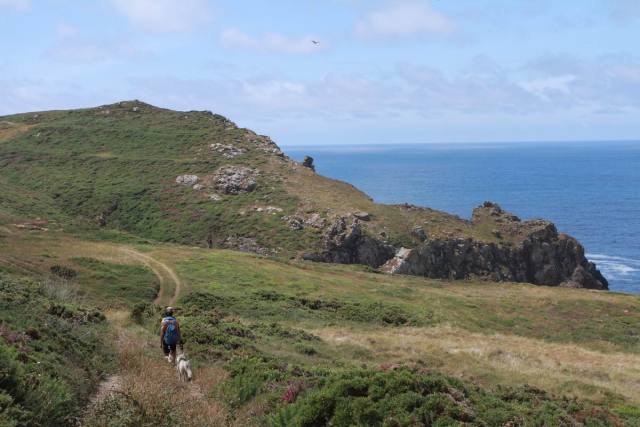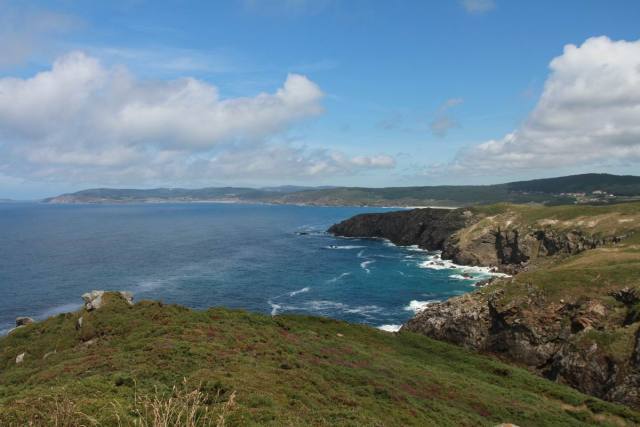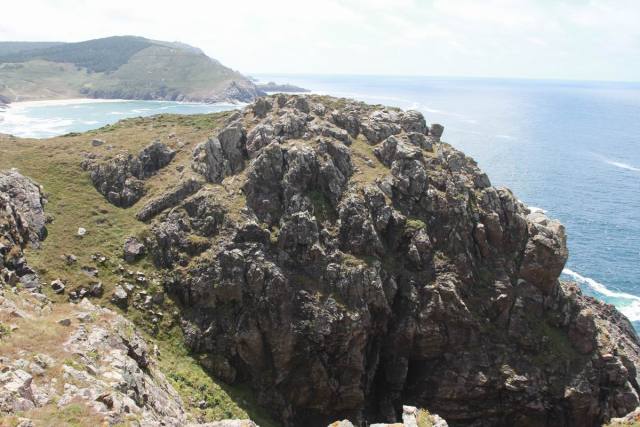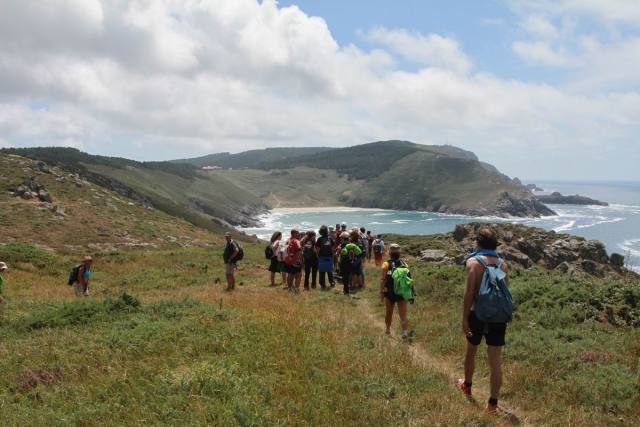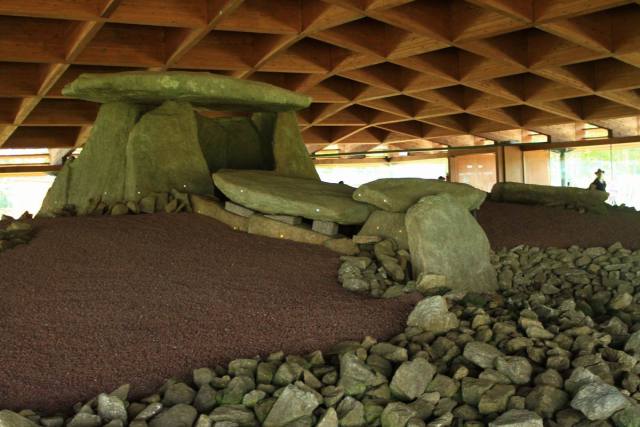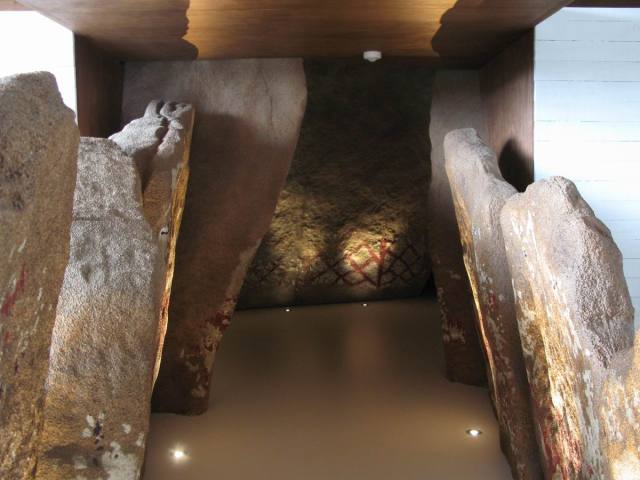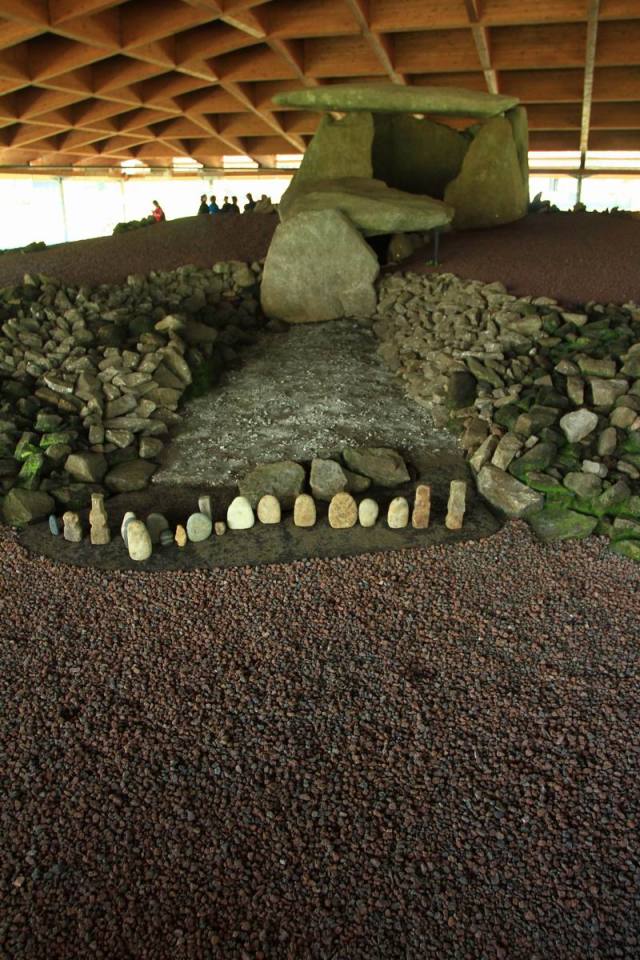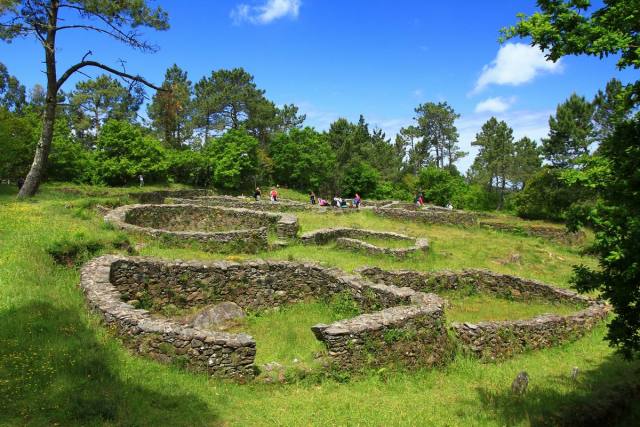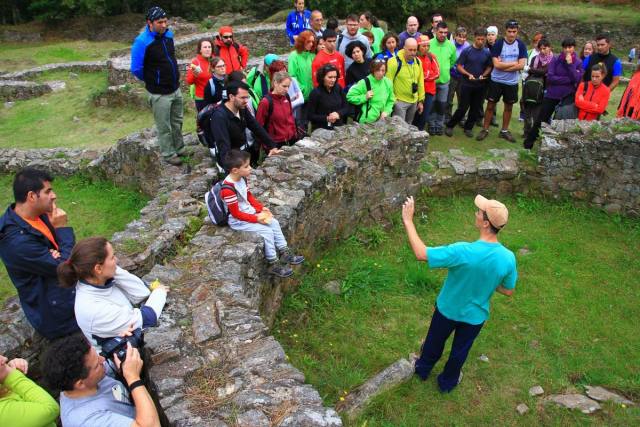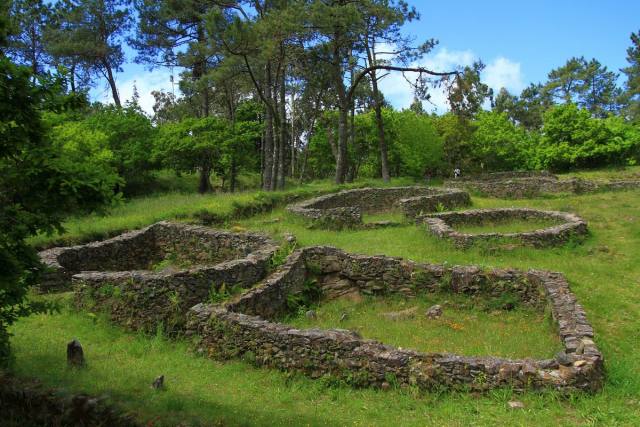
At the end of this part of the route we get to the Point Castelo. There, in the summit, getting into the sea, we see another vestige of History that dates back to the Iron Age: the Castro of Castromiñán.
As we are getting closer, we can see perfectly the two walls. At first sight, it seems a place impossible to live in but, as it happens in all the castros, the place chosen to build it is not by chance. The existence of the water of some springs used to be the main factor to decide the place where the castro would be built. Our ancestors managed to build a watchtower in the highest part to protect themselves against the coldest winds. From up there, they could control everything without being seen and, surrounded by cliffs, they didn´t need anything else to defend against anything.
Under the place where we are stepping on, we could find many keys to understand their daily routines. Just use your imagination. Although it is catalogued, it has neither studied nor even excavated. If you want to have further information, you can read the article by Manuel Gago.
Next to it, the Point Gavioteira (“gaviota” is a seagull), another challenging cliff. Its name fits the place. There is not better place for a marine bird than these isolated landscapes.
From this point we can see our next destination: the beach Arnela and the CapeNave. In order to reach that point, we will leave towards the road and we will walk across the rural settlements of Castromiñán and Denle.

O Camiño dos Faros reaches one of the most important monuments of the megalithic art in Galicia. The Dolmen in Dombate. This Dolmen has been the object of different excavations and studies. It has been recently created a plan to complete its restoration by protecting it with a dome of wood and a center for its study has been built.
Dates back to the year 3000 and 2500 b.c. and both its beauty and good condition have made it be considered the “Cathedral of the Galician Megalithic art”, being used as a literary source by great poets such as Eduardo Pondal. When carrying out the excavations, professor Bello and his team, have got to the conclusion that there was an even older dolmen under this one.
When we start the visit of the center of research, we are aware of its great splendor, enjoying its paintings and learn a bit more about its origin.
The Dolmen in Dombate is formed by seven big vertical slabs and one that covers them. All of them together form a polygonal chamber of 4*2’5 meters. The corridor is east-orientated. The polychrome engravings that were in the inner part of the slabs are not easy to see as there are only some geometric forms with parallel and oblique lines painted with black and red colors that they got from the charcoal and the iron oxide respectively.
Regarding the remains that have been found, there are some flint blades, arrows and polished axes, necklaces and ceramic pieces that belonged to the trousseau of the chief of the tribes to make the “travel” after dying easier. The divinity was represented by different human-shaped images placed along the corridor.
We, the “Trasnos” are not archaeologists, but after visiting the dolmen and seeing it in its original state, we left the place with a weird feeling as we think that something bad has been made to keep such a monument under such a big piece of wood that makes it seem to be much smaller. Suddenly, we wonder if it will stay there and it that condition 5000 years more.

This Castro was discovered in 1924 by Isidro Parga Pondal. The different archaeological excavations carried out let us see nowadays most of the “castro” and study the lifestyle of those people. It was inhabited between the 1st and 6th century and it seems not to have been Romanized.
There are lots of “castros” in this area. These settlements are in the high lands from where they dominate the whole area, and they are usually close to the bed of the rivers where they took the water from. This “castro” is a perfect example: there are several walls that surround the “castro” as a defense. There is also a stream close to it. From the “castro”, which is 200 meters high, we can see the mouth of the river Anllóns and the estuary of Corme and Laxe.
Most of the houses have a circular shape, with a 5-meter diameter. The ground floor of most of them is still kept in good condition. Apart from these dwellings, there are some remains of some other places of the village where the inhabitants carried out some other tasks. In the eastern area, which can be considered the entrance of the village, there is a kind of complex formed by a big oval house, two fountains and a circular oven used to melt the metal.
Its inhabitants were farmers, as some pieces of pottery and bronze have been found, prove that they used them in their daily tasks. These pieces are exhibited in the Castle of San Antón in A Coruña. As this “castro” is closed to the sea, it is believed that its inhabitants also carried out tasks related to fishing and shellfish-gathering. Without a doubt, it is a place to visit to know the lifestyle of the people of that time in this part of the coast.
Along the route, there are some monoliths that indicate that it is not allowed to sit or walk along their walls. In summer time, there is a guide who shows the visitor all this “jerarquía castreña” (the “castros” show the hierarchy of the people of that time) and its lifestyle, where men and women share the tasks and goods in a society where the age was the indicator of the largest ranges.


